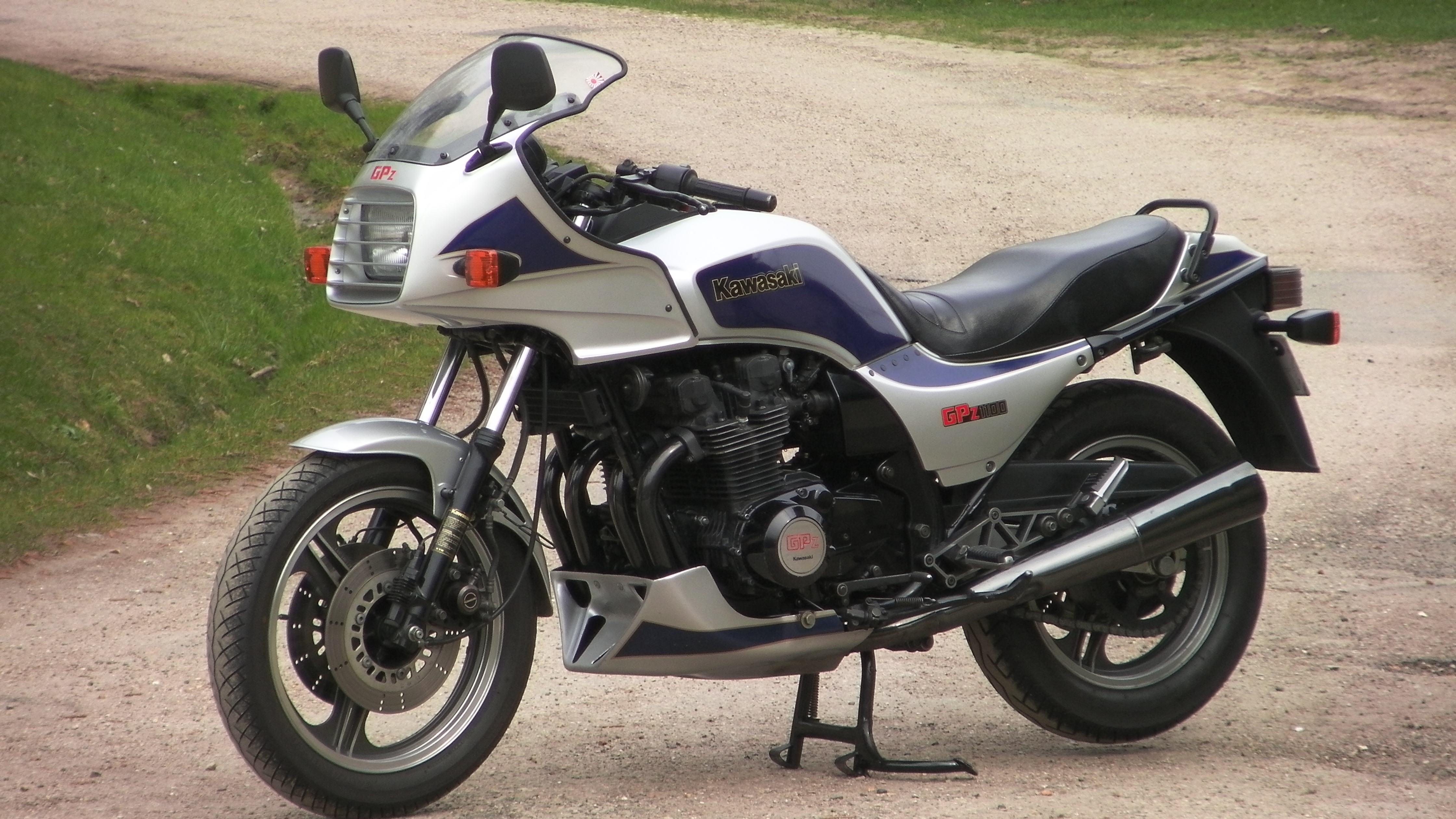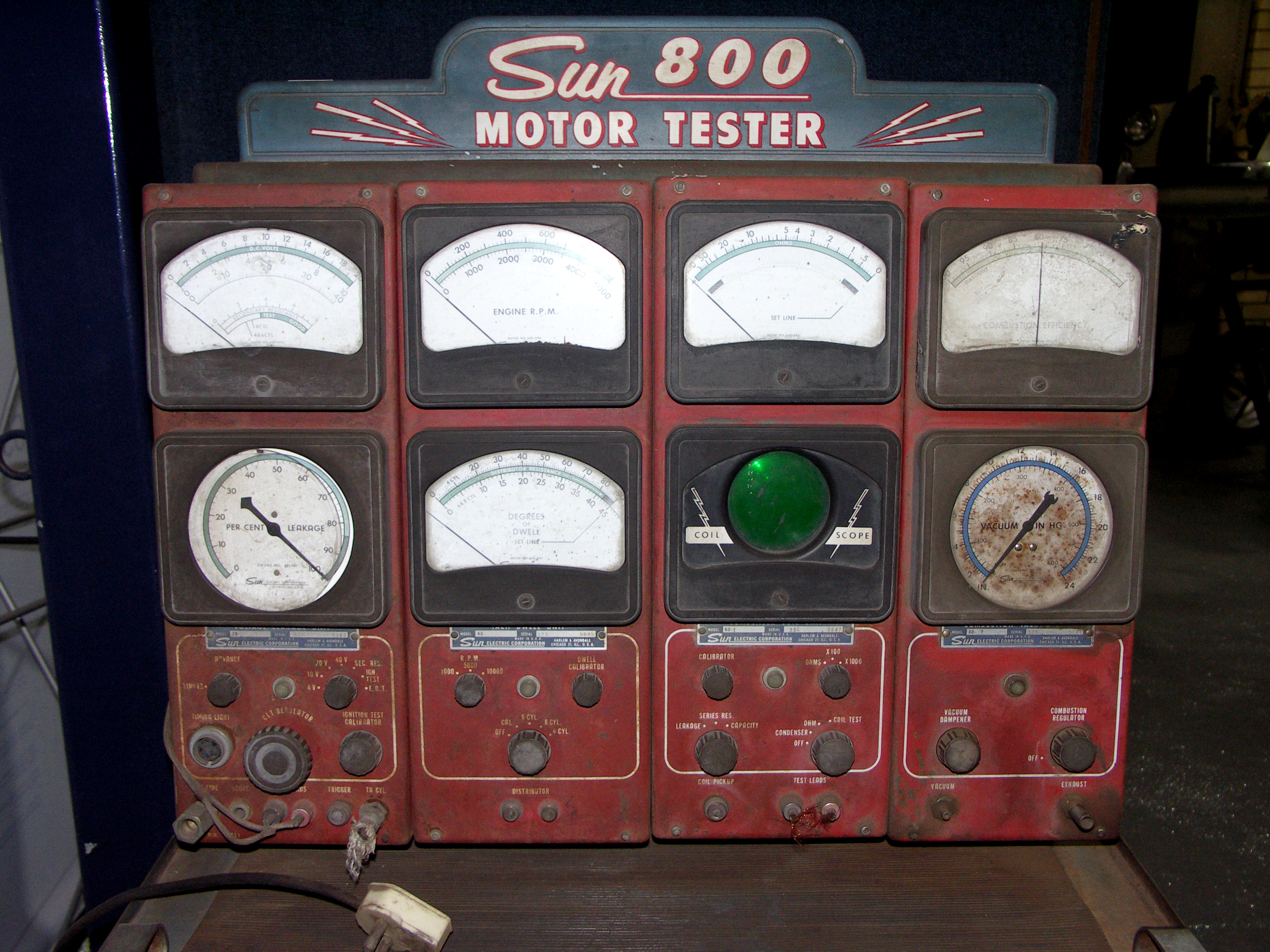|
Kawasaki GPZ1100 Sport Touring
The Kawasaki GPZ1100ABS motorcycle, also labeled GPZ 1100 Horizont, was introduced in 1995. It was a sport touring motorcycle with more focus on touring than sports. Based on a ZZR-1100 motor without the ram air and detuned for more mid-range performance, it also had smaller carburetors and a more restrictive exhaust. The bike was more focused on being economical with budget brakes and suspension. Instead of the Ninjas ZX-11's alloy frame, the bike had a steel double cradle frame with a removable front member for engine removal. The motorcycle had a more relaxed seating position and leg position than the ZX-11D/ZZR-1100 or the air-cooled GPZ1100 of the early 1980s .The official Kawasaki designation was ZX1100E. It also was offered in 1996 as an ABS model. See also *Kawasaki GPZ1100 (1981 – 1985) * Kawasaki GPZ1100 B1/B2 (1981 – 1982) *Kawasaki GPZ series Kawasaki GPZ or GPz refers to a series of motorcycles produced by Kawasaki Heavy Industries Motorcycle & Engine. Motorcy ... [...More Info...] [...Related Items...] OR: [Wikipedia] [Google] [Baidu] |
Kawasaki Heavy Industries Motorcycle & Engine
Kawasaki Heavy Industries Motorcycle & Engine Company (川崎重工業モーターサイクル&エンジンカンパニー) is a division of Kawasaki Heavy Industries that produces motorcycles, All-terrain vehicle, ATVs, utility vehicles, jet ski personal watercraft, and general-purpose petrol engines. Before the 2011 fiscal year it was called Consumer Products & Machinery. Its slogan is "Let the good times roll!" Motorcycles Kawasaki's Aircraft Company began the development of a motorcycle engine in 1949. The development was completed in 1952 and mass production started in 1953. The engine was an air-cooled engine, air-cooled, 148 cc, Overhead valve, OHV, four-stroke engine, four-stroke single cylinder engine, single cylinder with a maximum power of at 4,000 rpm. In 1954, the first complete Kawasaki Motorcycle was produced under the name of Meihatsu, a subsidiary of Kawasaki Aircraft. In 1960, Kawasaki completed construction of a factory dedicated exclusively to mot ... [...More Info...] [...Related Items...] OR: [Wikipedia] [Google] [Baidu] |
Kawasaki Heavy Industries
(or simply Kawasaki) is a Japanese Public company, public multinational corporation manufacturer of motorcycles, engines, Heavy equipment (construction), heavy equipment, aerospace and Military, defense equipment, rolling stock and ships, headquartered in Chūō-ku, Kobe, Chūō, Kobe and Minato, Tokyo, Minato, Tokyo, Japan. It is also active in the production of industrial robots, gas turbines, pumps, boilers and other industrial products. The company is named after its founder, Kawasaki Shōzō, Shōzō Kawasaki. KHI is known as one of the three major heavy industrial manufacturers of Japan, alongside Mitsubishi Heavy Industries and IHI Corporation, IHI. Prior to the World War II, Second World War, KHI was part of the Kobe Kawasaki ''zaibatsu'', which included JFE Holdings, Kawasaki Steel and K Line, Kawasaki Kisen. After the conflict, KHI became part of the DKB Group (''keiretsu''). History Kawasaki Shōzō, Shōzō Kawasaki, born in 1836, was involved with the marine indu ... [...More Info...] [...Related Items...] OR: [Wikipedia] [Google] [Baidu] |
Kawasaki GPZ1100
The Kawasaki GPZ1100 is a motorcycle that was manufactured by Kawasaki from 1981 to 1985. All four models featured fuel injection and 1,089 cc engines. All were short lived and were an attempt to fill a market segment that was rapidly changing. 1981 B1 and 1982 B2 The 1981 GPz1100 was the first 1,100 cc motorcycle released by Kawasaki. It was officially marketed as the GPz1100 B1. Its frame design was a typical cradle design and the engine was based on the new z1000J motor, fitted with roller bearings, but the engine capacity was increased to 1,089 cc. Cycle World stated "...the big Kawi went well, with standing quarters in just over 11 seconds at 119mph, fastest in its class at the time." Rather than featuring carburetors, the B1 was fitted with electronic fuel injection (EFI) a Bosch-derived Nissan fuel injection as used on the earlier 1980 Z1000G/H models. Suspension and braking was similar to earlier models; the front forks featured 38 mm tubes, the ... [...More Info...] [...Related Items...] OR: [Wikipedia] [Google] [Baidu] |
Inline-four Engine
A straight-four engine (also called an inline-four) is a four-cylinder piston engine where cylinders are arranged in a line along a common crankshaft. The vast majority of automotive four-cylinder engines use a straight-four layout (with the exceptions of the flat-four engines produced by Subaru and Porsche) and the layout is also very common in motorcycles and other machinery. Therefore the term "four-cylinder engine" is usually synonymous with straight-four engines. When a straight-four engine is installed at an inclined angle (instead of with the cylinders oriented vertically), it is sometimes called a slant-four. Between 2005 and 2008, the proportion of new vehicles sold in the United States with four-cylinder engines rose from 30% to 47%. By the 2020 model year, the share for light-duty vehicles had risen to 59%. Design A four-stroke straight-four engine always has a cylinder on its power stroke, unlike engines with fewer cylinders where there is no power stroke occu ... [...More Info...] [...Related Items...] OR: [Wikipedia] [Google] [Baidu] |
Motorcycle
A motorcycle (motorbike, bike, or trike (if three-wheeled)) is a two or three-wheeled motor vehicle steered by a handlebar. Motorcycle design varies greatly to suit a range of different purposes: long-distance travel, commuting, cruising, sport (including racing), and off-road riding. Motorcycling is riding a motorcycle and being involved in other related social activity such as joining a motorcycle club and attending motorcycle rallies. The 1885 Daimler Reitwagen made by Gottlieb Daimler and Wilhelm Maybach in Germany was the first internal combustion, petroleum-fueled motorcycle. In 1894, Hildebrand & Wolfmüller became the first series production motorcycle. Globally, motorcycles are comparably popular to cars as a method of transport. In 2021, approximately 58.6 million new motorcycles were sold around the world, fewer than the 66.7 million cars sold over the same period. In 2014, the three top motorcycle producers globally by volume were Honda (28%), Yamaha (17 ... [...More Info...] [...Related Items...] OR: [Wikipedia] [Google] [Baidu] |
Sport Touring Motorcycle
A sport touring motorcycle (sometime a "sports-tourer") is a type of motorcycle that combines the performance of a sport bike with the long-distance capabilities and comfort of a touring motorcycle. The first sport-tourer is said to be the fully faired 1977 BMW R100RS. Journalist Peter Egan defines the sport-tourer as a "café racer that doesn't hurt your wrists and a touring bike that doesn't feel like a tank," and identified the R100RS as the first example he owned. Unlike a sport model, a sport touring model will typically have more wind protection with larger fairings and an adjustable windscreen, a transmission with lower gearing, a shaft drive instead of chain drive, side and/or rear pannier storage systems, a larger alternator for more accessories, heated handlebar grips, remotely adjustable headlights, a larger fuel tank for increased range, and a more upright seating position. Unlike a full touring model, a sports-tourer will typically have more ride height ground ... [...More Info...] [...Related Items...] OR: [Wikipedia] [Google] [Baidu] |
Kawasaki Ninja ZX-11
The ZZ-R1100 or ZX-11 is a sport bike in Kawasaki's Ninja series made from 1990 to 2001, as the successor to the 1988–1990 Tomcat ZX-10. With a top speed of , it was the fastest production motorcycle from its introduction until 1996, surpassed by the Honda CBR1100XX. It was marketed as the ZX-11 Ninja in North America and the ZZ-R1100 in the rest of the world. The C-model ran from 1990 to 1993 while the D-model ran from 1993 to 2001, when it was replaced by the ZZ-R1200 (ZX-12C) 2002-2005 Competition for fastest production motorcycle With a record top speed of the ZX-11 was the fastest production motorcycle for six years, from its introduction in 1990 through 1995, when it was surpassed by the 1996 Honda CBR1100XX. When the bike was introduced in 1990, the nearest production bike top speed was slower and it belonged to the ZX-10, the bike that Kawasaki was replacing with the ZX-11. The ZX-11 also had a ram air induction system. The 1990 ZX-11 C1 model got a Ram-air inta ... [...More Info...] [...Related Items...] OR: [Wikipedia] [Google] [Baidu] |
Engine Tuning
Engine tuning is the adjustment or modification of the internal combustion engine or Engine Control Unit (ECU) to yield optimal performance and increase the engine's power output, economy, or durability. These goals may be mutually exclusive; an engine may be de-tuned with respect to output power in exchange for better economy or longer engine life due to lessened stress on engine components. Tuning can include a wide variety of adjustments and modifications, such as the routine adjustment of the carburetor and ignition system to significant engine overhauls. Performance tuning of an engine can involve revising some of the design decisions taken during the development of the engine. Setting the idle speed, air-fuel ratio, carburetor balance, spark plug and distributor point gaps, and ignition timing were regular maintenance tasks for older engines and are the final but essential steps in setting up a racing engine. On modern engines equipped with electronic ignition and fuel i ... [...More Info...] [...Related Items...] OR: [Wikipedia] [Google] [Baidu] |
Anti-lock Braking System
An anti-lock braking system (ABS) is a safety anti-skid braking system used on aircraft and on land vehicles, such as cars, motorcycles, trucks, and buses. ABS operates by preventing the wheels from locking up during braking, thereby maintaining tractive contact with the road surface and allowing the driver to maintain more control over the vehicle. ABS is an automated system that uses the principles of threshold braking and cadence braking, techniques which were once practiced by skillful drivers before ABS was widespread. ABS operates at a much faster rate and more effectively than most drivers could manage. Although ABS generally offers improved vehicle control and decreases stopping distances on dry and some slippery surfaces, on loose gravel or snow-covered surfaces ABS may significantly increase braking distance, while still improving steering control. Since ABS was introduced in production vehicles, such systems have become increasingly sophisticated and effective. Mode ... [...More Info...] [...Related Items...] OR: [Wikipedia] [Google] [Baidu] |
Kawasaki GPZ1100 B1/B2
The Kawasaki GPz1100 B1 and B2 are motorcycles that were manufactured by Kawasaki in 1981 and 1982 respectively. Both models featured a four-cylinder, two-valve air-cooled engine design with a capacity of 1,089 cc. This engine was an evolution of the powerplant used in the previous Kz1000 series, itself descended from the Z1. In 1983 the GPz1100 was completely revamped in both cosmetic styling, suspension and updated engine. The model number changed to ZX1100A1. Model differences Cosmetically, both the B1 and B2 were released in a bright red paint called "Firecracker Red", the B2 was also available in a gold colour called "Sonic Gold". The red colour theme was a departure from early colour schemes and started the marketing campaign called the "Red Revolution" featuring the 1100, 900, 750 and 550 models. Handlebars The B1 had conventional 7/8" handlebars as found on all earlier Kawasaki "Z" series bikes, the B2 had clip on style handlebars that mounted to the top of t ... [...More Info...] [...Related Items...] OR: [Wikipedia] [Google] [Baidu] |
Kawasaki GPZ Series
Kawasaki GPZ or GPz refers to a series of motorcycles produced by Kawasaki Heavy Industries Motorcycle & Engine. Motorcycles in this series include: * Kawasaki GPZ1100 (1981–1985) * Kawasaki GPZ1100 B1/B2 (1981–1982) * Kawasaki GPZ1100 Sport Touring/Horizont/ABS (1995–1998) * Kawasaki GPZ1000RX (1986–1988) * Kawasaki GPZ900R (1983–1996) * Kawasaki GPZ750R (1985–1987) * Kawasaki GPZ750 Turbo (1983–1985) * Kawasaki GPZ750 (1982–1985) * Kawasaki GPZ600R (1985–1997) * Kawasaki_Z500/Z550#KZ550D,_KZ550H,_ZX550A_(GPz550), Kawasaki GPZ550 (1981–1985) * Kawasaki Ninja 500R, Kawasaki GPZ500S (1987–2009) * Kawasaki GPZ400R (1985-1990) * Kawasaki GPZ305 (1983–1994) * Kawasaki GPZ250 (1983–1987) See also * Kawasaki GTR1000 "Concours" (1986–2006, same Motor as the GPZ1000RX) * Kawasaki Eliminator "ZL900" & "ZL1000" (1985–1988, same Motor as the Kawasaki GPZ900R/GPZ1000RX) * Kawasaki Z series (naked predecessor series) * Kawasaki Ninja series * List of Kawasaki mo ... [...More Info...] [...Related Items...] OR: [Wikipedia] [Google] [Baidu] |






